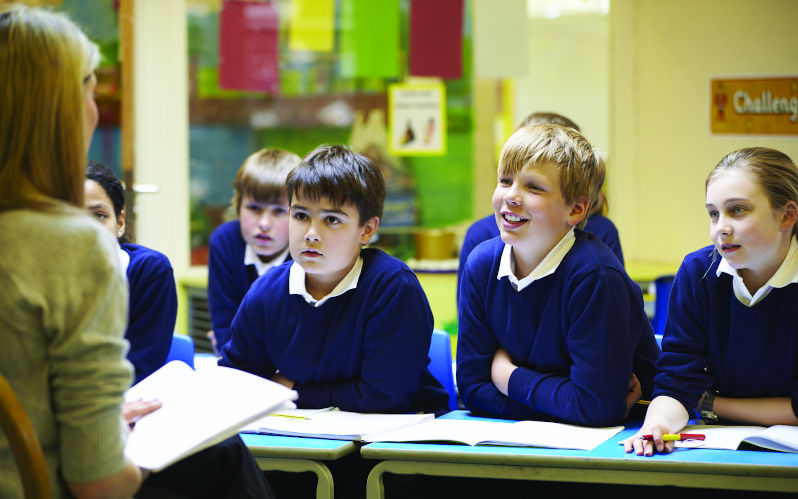Election 2022: no education minister and an opposition without a school funding policy
May 16, 2022
Anthony Albanese and Tanya Plibersek taunt Scott Morrison, calling on him to identify who is actually education minister - the disgraced Alan Tudge or the disgraceful Stuart Robert - but Labor has questions of its own to answer.
School funding in Australia is a rolling disaster but neither major party wants to talk about the issue, let alone advance a serious solution.
With a litany of special deals that have shamelessly favoured the non-government sector, the Morrison Government has barely maintained a pretence of governing in the interests of all Australian children. They include JobKeeper subsidies for private schools that made huge profits; flood disaster relief for private schools only; a $1.2 billion dollar Choice and Affordability slush fund for the non-government sector, and yet another billion in the March budget.
Meanwhile, public schools will not even reach 90 per cent of the needs-based resource standard until the end of the decade. The result is that we are now living an oxymoron. One third of nominally private schools receive more taxpayer funding than at least half of comparable public schools. Thats not counting income from fees and other private sources. Thats taxpayer funding alone. Nobody actually defends this in principle, but thats what were doing.
Conceivably, an opposition striving to win government might seek to make something of all this, but Labors approach has fallen victim to Albos small target strategy, along with the partys enduring timidity when it comes to the private school sector. Instead of a school funding policy, there have been a series of micro-announcements: money for Covid-proofing schools; resources for teaching respectful relationships; raising the entry standards to the teaching profession. All these policies are perfectly worthy in themselves, but taken together they amount to an evasion of the central question: what are Labors plans for the recurrent resourcing of schools?
As far as public schools go, Labor has offered only vague talk about a pathway to fair funding. No timeline, no dollars, and no guarantees. The only real commitment Labor has made this election is that that it wont touch the funding of private schools.
When Tanya Plibersek made an election campaign appearance on Insiders, the Twitterati were all agog with her cheeky line needling host David Speers - I dont want to interrupt you David. But the Twitter cheer squad was less vocal when it came to an issue of actual substance that affects the lives of millions of young people.
Speers asked Plibersek exactly the right question: when will Labor deliver 100% of needs-based funding to public schools? In response, Plibersek offered an excuse not an answer. Well, were in the middle of an existing funding agreement that the Commonwealth signed with the states now, she protested. That agreement concludes in 2023. We would, if elected, be negotiating with the states and territories about the next funding agreement.
As subterfuges go, Pliberseks is decidedly threadbare. Last election, Labor made a ten year $14 billion funding commitment which included the current four-year funding agreement and the new one that will be negotiated next year. Plibersek is now claiming that she cant possibly provide a specific commitment that she was perfectly capable of making three years ago.
Speers offered a more plausible explanation for Labors reticence when he observed that it had instead chosen to back Morrisons Stage 3 tax cuts for those earning over $200,000.
Labor has also failed to offer any detailed policy on the respective roles of Commonwealth and state governments in fully funding public schools. Should the Commonwealth lift its share from 20 to 25 percent of the schooling resource standard (to complement the states’ responsibility to deliver 75 percent). Or does Labor have an alternative plan to bring public schools up to one hundred percent? We dont know.
Then there is the matter of the special deals which mean the states dont even have to deliver their 75 percent share. The loophole, crafted by Morrison and former education minister, Dan Tehan, allows states to count capital depreciation, and spending on school transport, regulatory authorities, pre-school and early childhood - even though none of the above are included in the agreed definition of net recurrent income per student. Labor has expressed disapproval; its less clear whether it has a policy position to scrap this special arrangement (which doesnt apply to private schools).
Voters are left to choose between a government struggling to work out who the responsible minister is and an opposition missing in action. All the while, school achievement continues to decline and the gap between the haves and the have-nots steadily grows.
Tom Greenwell and Chris Bonnor are the authors of Waiting for Gonski: How Australia failed its schools published by UNSW Press.
